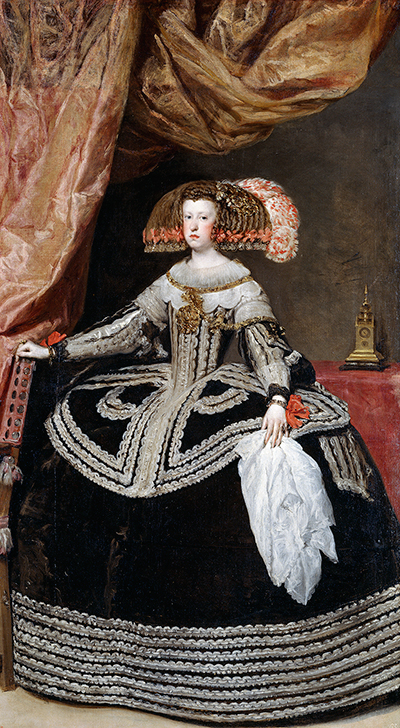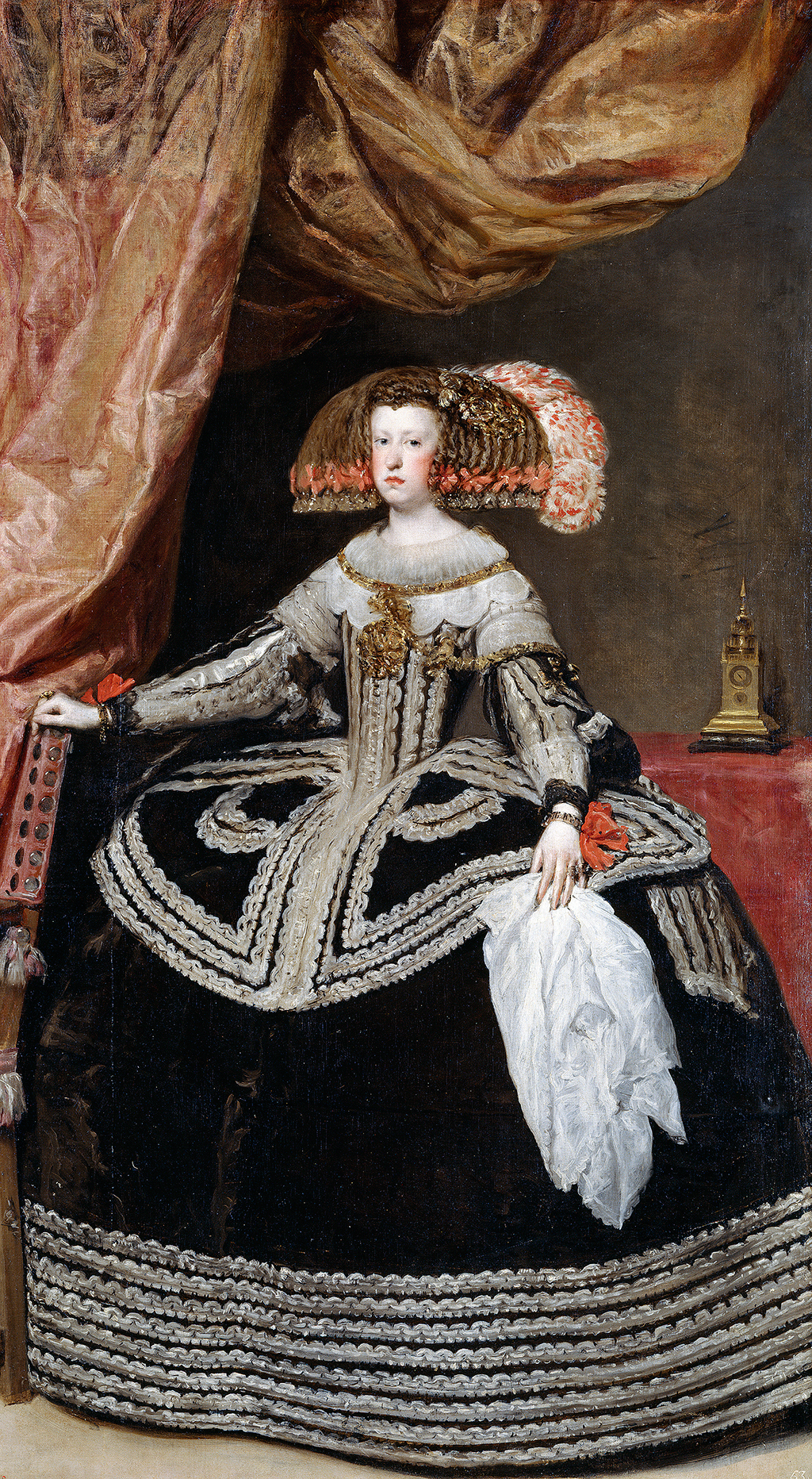This somewhat unflattering portrait of Queen Dona Mariana of Austria was completed by Diego Velazquez in 1652–1653. We are all well aware of her daughter's appearance in Las Meninas, but here it was mother's turn to appear on canvas.
The two elements to this painting that first strike us is the scale of her clothing, and also the non-plussed expression on her face. Perhaps it was the weight of this outfit, and the length of time that she would have to pose in it, that led to such a miserable expression. It may also have been the artist's decision to portray her in this way, we will never know the truth all these centuries later. It was unusual for Velazquez to do this, as almost all other portraits that he produced during his career were complementary to both the appearance and character of the model, regardless of reality. It would also not have been wise for him to upset any other those appearing in his work, as most were highly connected, powerful people whose reputation would have been particularly important to them. The actual artwork itself is technically impressive and the beauty of the drapery behind the woman, as well as her own extravagant outfit, ensure that this is still an enjoyable and memorable piece.
It was in the 1650s that this artist produced a number of portraits of the royal family of Spain. He would often darken less significant elements of the composition and then add extra colour and light to the more intricate elements of their clothing. We can see examples of that here, in how the hanging cloth picks up an abundance of light, as does the stunning plumage which hangs from her complex hat. When viewing this painting up close, one can actually appreciate and understand each individual touch of paint, with the embroidery across the lining of her outfit being particularly splendid. Around her chest area, a number of touches of white paint are added, almost at random, in order to continue the infusion of light and more continues on the sleeves of her outfit. Behind her is a small clock upon a table, whilst thick cloth hangs above in order to disguise whatever was normally found within that room.
Diego Velazquez is considered one of the finest Spanish artists in history and his work also help us to visualise many of the leading political figures of this region across the 17th century. He may not have achieved quite the same fame as the likes of Rembrandt or Van Eyck, but he is still highly significant and sits alongside Goya in terms of Spanish art from the more traditional periods. He also specialised in portraiture which perhaps has limited respect for his work in the present age, but at the time this was the leading genre with which to attain academic respect, alongside religious and history paintings. It was only in the later centuries that landscape art would start to gain recognition and for many years before it was merely seen as a supporting element, just as Velazquez would often add scenes of rolling hills into the backgrounds of the portraits that he set in outdoor environments.





